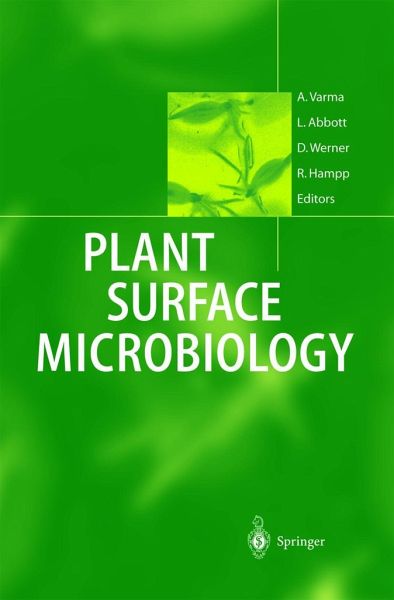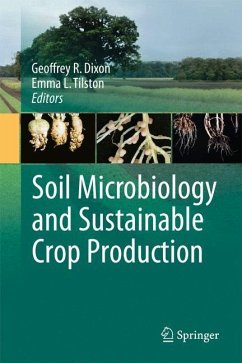
Plant Surface Microbiology
Versandkostenfrei!
Versandfertig in 1-2 Wochen
153,99 €
inkl. MwSt.
Weitere Ausgaben:

PAYBACK Punkte
77 °P sammeln!
This volume examines the interactions between plants and microorganisms located on plant surfaces, exploring their possible biotechnological applications. Interactions of microbial communities with plants are illustrated by experimental studies of typical symbiosis. Topics include signaling within a symbiosis, molecular differences between symbiotic and pathogenic microorganisms, and the role of microorganisms in the development of plants.
Most plants rely on the co-existence with microorganisms: both groups benefit from these symbioses. It has been shown that a large number of specific genes in plants and microorganisms are only activated during these interactions. Of course, various microbes also act as pathogens.
Interactions between plants and microorganisms are often located on plant surfaces, such as leaf cuticles, seeds and mainly on the roots. The communication between plants and microbes is the main topic treated in "Plant Surface Microbiology", such as the signaling within a symbiosis, the molecular differences between symbiotic and pathogenic microorganisms, the role of microorganisms in the development of plants or in plant protection against deleterious agents. Further contributions are devoted to: the analysis of bacterial communities in the rhizosphere; microbial population genetics; aspects of mycorrhizal symbiosis; functional genomic approaches and the use of microorganisms as bio-indicator of soil disturbance.
Interactions between plants and microorganisms are often located on plant surfaces, such as leaf cuticles, seeds and mainly on the roots. The communication between plants and microbes is the main topic treated in "Plant Surface Microbiology", such as the signaling within a symbiosis, the molecular differences between symbiotic and pathogenic microorganisms, the role of microorganisms in the development of plants or in plant protection against deleterious agents. Further contributions are devoted to: the analysis of bacterial communities in the rhizosphere; microbial population genetics; aspects of mycorrhizal symbiosis; functional genomic approaches and the use of microorganisms as bio-indicator of soil disturbance.














